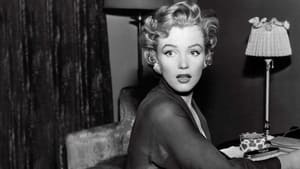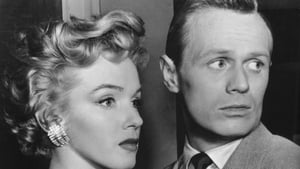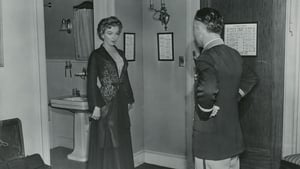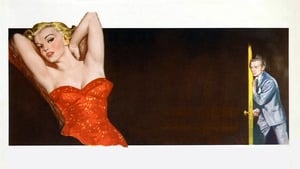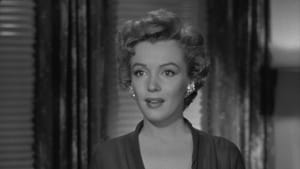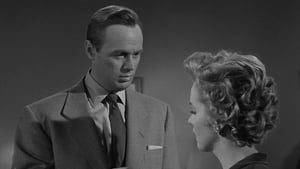Contact: [email protected]
Video Sources 0 Views

Synopsis
[ez-toc]




Introduction
In the ever-evolving landscape of cinema, the allure of old movies remains unparalleled. Their timeless stories and vintage aesthetics transport audiences to a bygone era, offering a glimpse into the golden age of Hollywood. One such gem that has been revitalized for contemporary audiences is the 1952 psychological thriller, “Don’t Bother to Knock Colorized.” However, what sets this classic apart is its recent colorization, a move that has sparked debates among cinephiles. In this article, we delve into the world of “Don’t Bother to Knock Colorized,” exploring its narrative intricacies, stellar performances, and the controversial decision to add a splash of color to its black-and-white canvas.
Read Media File Transfer Agreement: Terms and Conditions
Read FAQ
Understanding “Don’t Bother to Knock Colorized”
Directed by Roy Ward Baker, “Don’t Bother to Knock Colorized” takes us back to the cinematic landscape of 1952, a time when psychological thrillers were finding their footing. Set against the backdrop of a bustling New York hotel, the film follows the intertwining lives of its characters, unraveling a gripping tale of suspense and intrigue. Adapted from Charlotte Armstrong’s novel, the movie encapsulates the essence of classic Hollywood cinema with its suspenseful storytelling and atmospheric setting.
Exploring the Psychological Thriller Elements in “Don’t Bother to Knock Colorized”
At its core, “Don’t Bother to Knock Colorized” is a psychological thriller that masterfully weaves together elements of mystery and suspense. Charlotte Armstrong’s influence on the narrative is unmistakable, as the film navigates the complexities of human psyche and the thin line between reality and illusion. The suspenseful atmosphere keeps viewers on the edge of their seats, a testament to the film’s enduring appeal as a psychological thriller.
Analyzing the Key Characters and Performances
Marilyn Monroe and Richard Widmark take center stage, delivering performances that elevate the film to iconic status. Monroe, in a riveting leading role as the troubled babysitter, showcases her versatility beyond the comedic roles she was known for. Richard Widmark, portraying the enigmatic airline pilot, adds depth and intensity to the narrative. Their on-screen chemistry and individual brilliance contribute significantly to the film’s success, making “Don’t Bother to Knock Colorized” a standout piece in both of their illustrious careers.
Marilyn Monroe’s portrayal of the babysitter is particularly noteworthy. In a departure from her more lighthearted roles, Monroe delivers a nuanced and haunting performance. Her ability to convey vulnerability and unpredictability adds layers to the character, leaving a lasting impression on audiences. Richard Widmark, known for his intensity on screen, brings a mysterious charm to the role of the airline pilot. The dynamic between Monroe and Widmark forms the crux of the film’s suspense, keeping viewers engaged from start to finish.
Deconstructing the Narrative Structure and Themes
The New York hotel serves as more than just a backdrop; it becomes a character in itself, setting the stage for the unfolding drama. The complexities of the babysitter character and the mysterious nature of the airline pilot bring forth themes of identity and deception, adding layers to the narrative. The film explores the human psyche in a confined space, amplifying the suspense and tension that linger throughout.
The intricacies of the narrative structure mirror the psychological depth of the characters. As the plot unfolds within the confines of the New York hotel, the audience is taken on a rollercoaster of emotions. The suspense is not solely reliant on external factors but is deeply rooted in the internal struggles and hidden motivations of the characters. This masterful storytelling technique adds a timeless quality to the film, making it as relevant today as it was in 1952.
The Colorization Controversy: Pros and Cons
Colorization, the process of adding color to black-and-white films, has been a subject of debate in the world of cinema. Some argue that it breathes new life into old classics, making them more accessible to modern audiences. Others, however, believe that it compromises the artistic integrity of the original work. Understanding the context of colorized movies and their place in film history is crucial when evaluating the pros and cons of this controversial practice.
The proponents of colorization argue that it revitalizes old movies, making them visually appealing to contemporary audiences. It bridges the gap between generations, introducing classic films to viewers who may be deterred by black-and-white aesthetics. Additionally, colorization can enhance the overall viewing experience, bringing out details and nuances that may be lost in monochrome.
However, purists contend that colorization alters the intended artistic vision of filmmakers. The choice of black-and-white cinematography is a deliberate one, often contributing to the mood, atmosphere, and storytelling of a film. Colorization, they argue, can dilute these elements, providing a distorted version of the original work. The debate raises questions about the balance between preserving cinematic history and respecting the creative choices of filmmakers.
The Colorized Version of “Don’t Bother to Knock Colorized”: A Different Viewing Experience
The colorized iteration of “Don’t Bother to Knock Colorized” invites audiences to experience the film in a new light. With advancements in technology, viewers can now watch this classic online, allowing for a convenient and immersive cinematic experience. Comparing the aesthetics of the original and colorized versions unveils a spectrum of emotions, with proponents appreciating the vibrancy it brings, while purists argue that the monochrome charm of the 1952 original should remain untouched.
Online platforms have made it easier for audiences to access and appreciate classic films. The colorized version of “Don’t Bother to Knock Colorized” is no exception, providing a gateway for new viewers to discover the brilliance of Monroe and Widmark. While the colorization controversy persists, the accessibility offered by digital platforms cannot be overlooked. It opens avenues for discussions about the evolution of film preservation and the delicate balance between tradition and technological advancements.
Preserving Cinematic Gems: The Importance of Restoring and Digitizing Old Movies
The contentious issue of colorization aside, the overall preservation of old movies is paramount. Film restoration and digital preservation techniques play a pivotal role in maintaining the legacy of cinematic treasures like “Don’t Bother to Knock Colorized.” By safeguarding these classics, we ensure that future generations can appreciate the artistry and storytelling prowess that defined a bygone era.
Film restoration involves meticulous efforts to enhance the visual and auditory quality of a film, ensuring that it stands the test of time. This process goes beyond colorization, focusing on preserving the original integrity of the work while eliminating imperfections caused by aging. Digital preservation techniques, on the other hand, involve creating digital copies of films, preventing deterioration and ensuring widespread accessibility.
The significance of preserving cinematic gems extends beyond nostalgia. These films are cultural artifacts that provide insights into different eras, societal norms, and artistic movements. They serve as a foundation for contemporary filmmakers, influencing the language of cinema and inspiring new generations of storytellers. The commitment to preserving these treasures ensures that the rich tapestry of cinematic history remains intact for years to come.
Conclusion
As we conclude our exploration of “Don’t Bother to Knock Colorized,” we extend an invitation to audiences old and new to immerse themselves in this 1952 drama film. Whether in its original black-and-white form or the controversial colorized version, the timeless allure of this cinematic masterpiece endures. With the exceptional performances of Marilyn Monroe and Richard Widmark, coupled with the psychological depth of the narrative, “Don’t Bother to Knock Colorized” remains a testament to the enduring magic of classic Hollywood cinema. So, don’t bother to resist – indulge in the captivating world of “Don’t Bother to Knock” and witness the seamless blend of suspense, drama, and the ageless charm of 1950s cinema.
